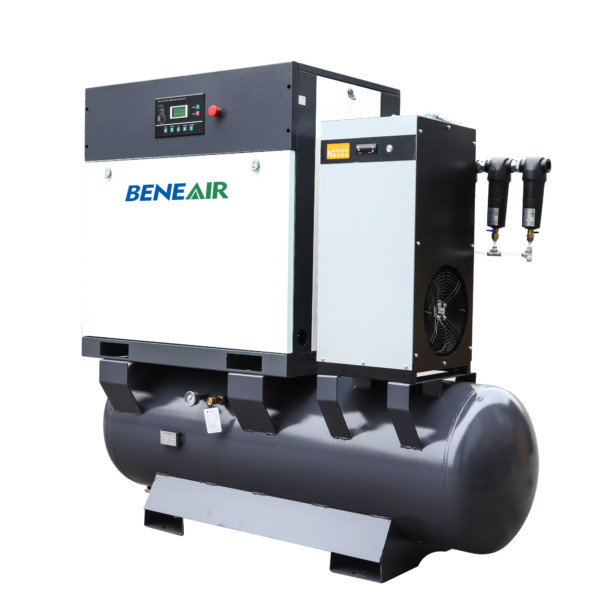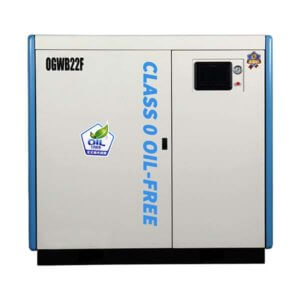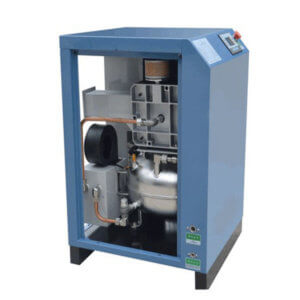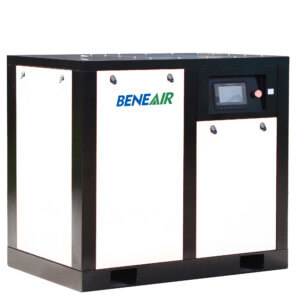Contents
Rotary screw air compressors are used in various industries to supply compressed air for different purposes. Climate control is one such use. Rotary screw compressors are ideal for climate control because they are very reliable and can operate under a wide range of conditions.
What is climate control air compressors?
What is climate control air compressors?
Room or building temperature and humidity are controlled by climate control air compressors. They work by compressing air and then releasing it into the environment. This cooled and dehumidified air helps maintain a comfortable climate in the building or room. When the air is removed from the compressor, it flows into the vents and is distributed throughout the building.
The rotary screw climate control air compressors are one such type of air compressor that utilises a rotating helical-screw (rotors) mounted on a standard shaft with a stationary housing (compressor shell).
When these two screws rotate together, they move hot gas along an increasing spiral path and progressively smaller spaces until it finally leaves through an exhaust port to enter a condenser and evaporator section. The efficiently compressed gas cools as its pressure decreases to reach equilibrium temperature and deliver cooled dehumidified air.
A rotary screw compressor works by drawing in air and then compressing it. It then releases the compressed air into the atmosphere. The rotary screw compressor is ideal for climate control because it is very reliable and can operate under various conditions.

Working as climate control air compressor
Working as climate control air compressor
A rotary screw compressor is used as a climate control air compressor by compressing the air and circulating it through the climate control system. The compressed air then cools the system by absorbing heat from the environment. This cooled air is then circulated back into the atmosphere to cool it down. The following points will better explain the working process:
- The rotary screw compressor operates by drawing in ambient air and compressing it.
- After the air is compressed, it enters a condenser to cool it to a low temperature.
- The now cold/cooled air is then moved across a refrigerant-to-air heat exchanger, which extracts more heat from this freezing gas and results in even more rigid gas entering the evaporator section of the climate control system (or “indoor unit”).
- Finally, as the now freezing and almost dry gas leaves the evaporator section of the indoor unit, water vapour begins to freeze out due to reduced temperature and high pressure. I.e., dehumidification occurs (condensation).
Functions of a climate control system
Functions of a climate control system
- To cool or heat the air in a room or building
- To dehumidify or humidify the air
- To filter the air
- To circulate the air
- Controlling the humidity in the air
- For controlling air temperature
Benefits of using rotary screw compressors for climate control
Benefits of using rotary screw compressors for climate control
Reliability:
Rotary Screw compressors work well under a variety of conditions and are very reliable. Oil changes and filters are the only maintenance required.
Efficiency:
Rotary screw compressors are more efficient than other air compressors, making them a better choice for climate control systems.
Versatility:
Rotary screw compressors can be used in a wide variety of climate control applications. They can also operate at low and high pressures, making them an ideal choice for this application.
Production:
Rotary screw compressors maximise production by allowing airflow to continue under heavy loading conditions (i.e., when the compressor must run on both sides of the system).
Climate control systems produce cooled or heated air circulated through ductwork in office buildings and retail establishments such as malls. The climate control system may be used to cool the entire building or just cool a specific area, such as an office.
The climate control system consists of two parts
The climate control system consists of two parts
The hot side:
The hot side is in contact with the environment and absorbs heat. The coil is sometimes called the outside side. The hot side contains a series of bare tubes or aluminium fins attached to increase surface area and enhance heat transfer. These tubes have refrigerant, which absorbs the heat from the environment and transfers it to the compressor side, where it is cooled and removed by an electric fan motor and discharged into the atmosphere, leaving only cool air behind.
The cold side:
The cold side or inside coil purifies and dehumidifies this air before circulating it through ductwork within a building. In some systems, water quality may be improved by passing the air over a desiccant wheel before entering the cold coil. It also removes excess humidity from this air before entering a building, reducing its tendency to form condensation on hard surfaces. Copper tubing and aluminium fins make up the cold side coil.
A fan motor on the cold side blows air over these fins, which cools the refrigerant in the tubes. The refrigerant then absorbs heat from the air, and the process begins again.
Is a rotary screw compressor a good fit for climate control air compressors?
Is a rotary screw compressor a good fit for climate control air compressors?
Yes, a rotary screw compressor is an excellent fit for climate control air compressors because of their reliability and versatility. Rotary screw compressors are very efficient and can operate at low or high pressures, making them ideal.
They also maximise production by allowing airflow to continue under heavy loading conditions (i.e., when the compressor must run on both sides of the system).
Since a rotary screw compressor is required in an industrial setting, it may be challenging to find one that operates correctly in your climate-controlled area. However, there are many ways you can make them work efficiently in this type of environment with some precautions.
Ensure you install proper filtration systems if the rotary screw compressor build up any dust and debris and ventilate your climate-controlled area with fresh, cool air.
Applications:
Rotary screw compressors are used in a wide variety of climate control applications, including:
- Cooling systems for office buildings and other large commercial spaces
- Production lines in factories
- Climate control systems for malls and other retail establishments
- HVAC systems in residential homes
- Marine air conditioning systems
- Aviation air conditioning and cabin heating systems.
Rotary screw compressors are an excellent option for climate control systems because of their reliability and versatility. This application requires them to be able to work at low or high pressures.
They also maximise production by allowing airflow to continue under heavy loading conditions (i.e., when the compressor must run on both sides of the system). If you are looking for a compressor that is efficient and easy to maintain, a rotary screw compressor may be the right fit for you.










Leave A Comment